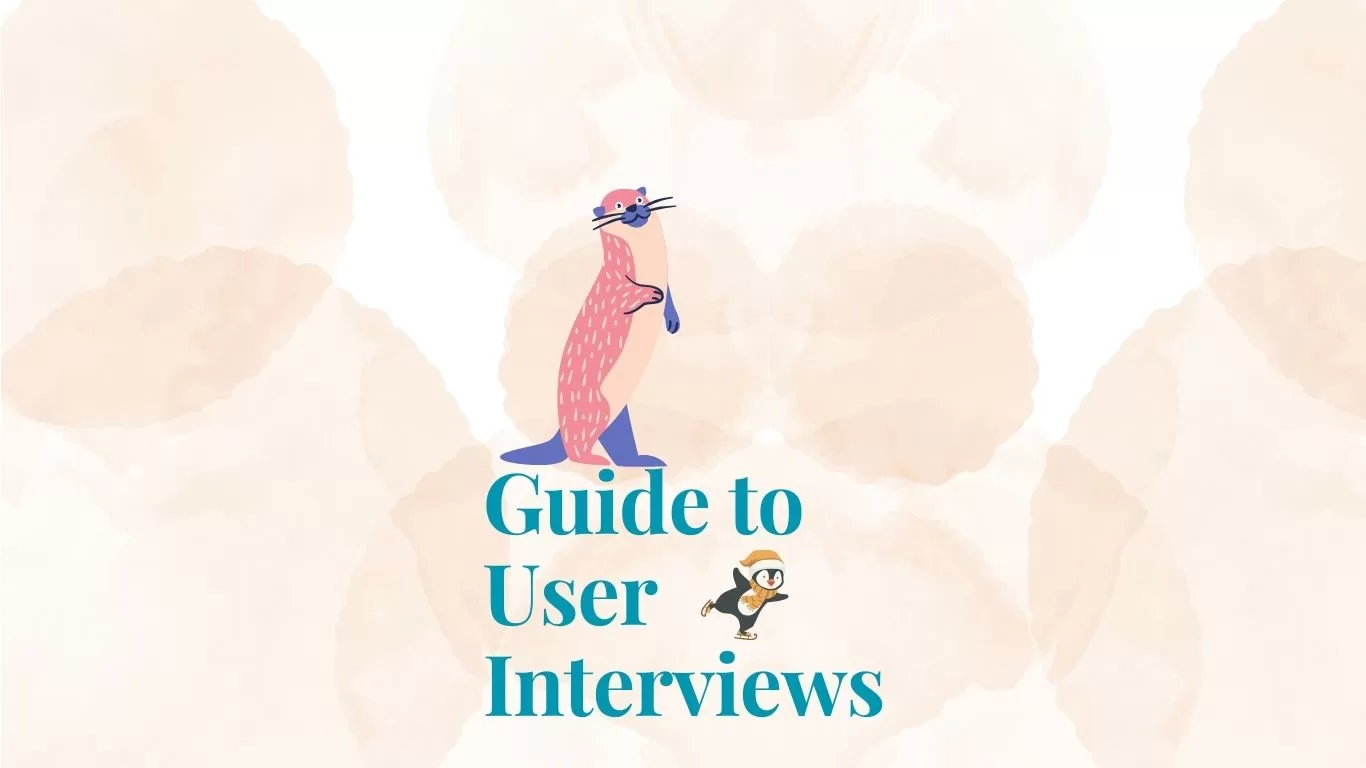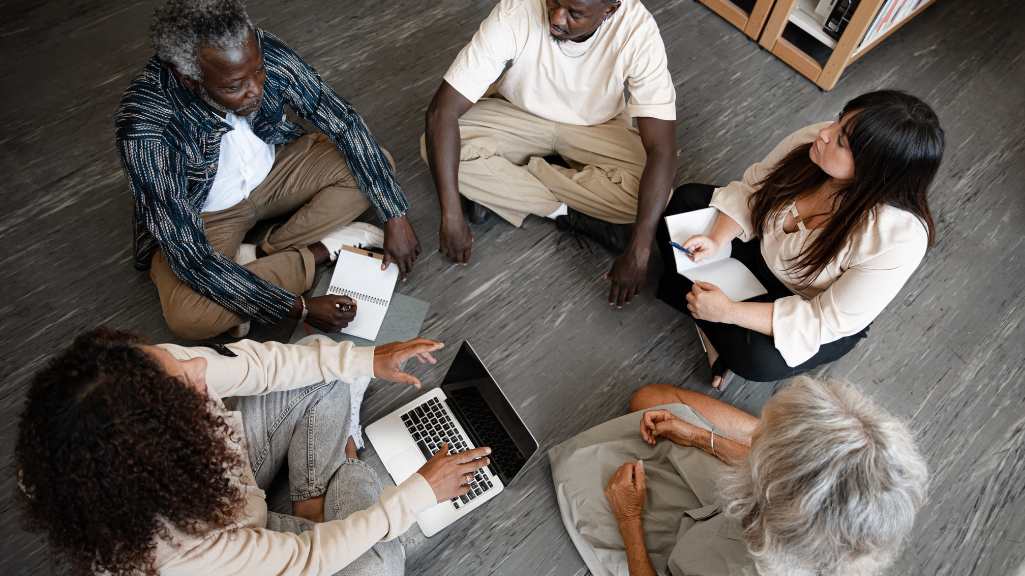User Interviews are Essential Part Of Gathering Data To Uncover Insights
What is a User Interview
User interviews are essential for gathering valuable insights directly from the target audience. Interviews are an integral part of collecting data. Data is one thing, but using that data to uncover insights is another.
User research is a critical part of the design process. Being able to interview users can help you uncover powerful insights that inform your design decisions.
What is the use of a User Interview?
Through user interviews, businesses can better understand their customers’ needs, preferences, and pain points. This valuable data can then be used to improve products or services, enhance customer experiences, and increase customer loyalty.
In brief, user interviews are an essential tool that empowers businesses to make informed decisions based on practical customer feedback.
Interviewing Users offers practical techniques for conducting informative interviews. As a result, you’ll move from simply gathering data to uncovering powerful insights about people.
How to approach a User Interview
However, it is essential to approach the process cautiously and avoid falling into the trap of “Friendly-Biased” interviewing.
This pitfall can result in an interviewer favouring candidates they perceive as friendly or similar to themselves rather than objectively assessing their qualifications and fit for the position.
Therefore, it’s crucial to remain unbiased and objective throughout the interview process to ensure fair and accurate evaluations of candidates.
Interviews are a great way to learn about people, but
1. where do you start?
2. How do you get the most out of every interview?
3. What tools and techniques should you use to capture insights from your valuable users effectively?
Whether doing interviews as part of your job, working on a research project, or wanting to learn more about a particular topic, this story will help you unlock the secrets of interview success.
Taking reference from Steve Portigal about techniques and tools that enable informative interviews. Steve is the founder of Portugal Consulting.
In the past 15 years, he’s interviewed families eating breakfast, rock musicians, home automation enthusiasts, credit-default swap traders, and radiologists.
Here’s how I approach user research to efficiently and effectively uncover these insights.
- I was curious about many things when I first conducted UX research interviews. However, in the third or fourth study, I realized how crucial it is to have a specific topic to research.
- Asking questions with no specific purpose or an unclear one will lead you to bias rather than insight. This isn’t always bad; having some tendency is good because it helps you frame your desire.
- The problem, though, is that if your bias isn’t practical — for example, if it doesn’t help solve a client’s problem — your insights won’t be either. So, the next time you’re scrolling through your list of questions to ask in a usability test, make sure you know what you’re looking for.
- Uncovering powerful insights about user behaviour is a daunting task. The process of finding data is frequently more important than the product itself. Most of us who work on products can recall when we were so preoccupied with hunting for data that we neglected to think critically about what it meant. This is because, on the surface, the data collection process seems more accessible and less nuanced than the complex product discovery process.
How I have learned to uncover powerful insights without falling prey to bias.
My account of my mistakes and learnings from conducting User Interviews and simple tips for anyone looking to get better insights from their next interview session.
- This intense curiosity was to find something out in my first few studies. I only thought about it since having an interest is good. After all, I am researching to uncover new things. The problem is that I end up with a lot of bias.
- I’ve learned from experience that the more curious you are, the more excited you get when you start seeing trends in your research data, and the more likely you are to overlook alternative explanations for your findings and over-interpret your results.
- This could result in false positives and false negatives, which could cause you to miss opportunities or misdiagnose problems completely.
- It almost felt like I already knew my user’s problems and how to solve them. I was only waiting to hear some words that would complete my research. If I listened to them in the first interview, the study was done, and everything after that was just extras for me.
- The problem is that I end up with a lot of bias. I begin the study with a hypothesis that affects how I approach people and ask them questions.
I might come into the study thinking:
# “I want to study how people feel about social media” or
# “I want to prove that people who use social media are happier than those who don’t.”
6. This can skew the results because my attitude towards the subject is already biased. It’s essential to remember what you’re looking for (what you’re curious about) and be open-minded about what you might discover instead of forcing your hypothesis onto the subject without realizing it.
7. But this could be better for research. For example, I should have included essential details from my participants, which could have been valuable for my team. Instead, it resulted in a study that only fulfilled my wants and failed to bring out the user’s pain points.
How To Avoid Biasing Your User Research
- If you have a team of people who will be part of the interview, ask everyone to write down their thoughts, assumptions, expectations, and beliefs on a wall before going in.
- If your team is remote, use some tools or just a spreadsheet and add these details.
- If you are alone, then go ahead and make a note of these in your diary.
- The idea is to bring out what everyone thinks they already know. Of course, there will be contradictions, but that’s fine.
- This exercise is essential as it allows your brain to be free from your opinions and go to an interview with an open mind.
- Working on projects for too long can often create bias, and it’s expected to have an opinion when you have been working on something for quite some time.
- Just make sure to do this exercise. It has helped me be ready to absorb everything I can from the user.
Want to get better insights into your customers? Start doing user research interviews.
Here’s how to start putting it together and making them effective.
- We are all part of organizations and often have goals to reach. While it might be tempting to steer the interview by your goals, it’s something you should stop and think more about.
- When talking to our participants for one of our studies, I asked questions unrelated to what we were doing. This caused me to get a lot of information unrelated to the study, and I even had a participant ask me why we were asking such questions. It was a waste of time, and they couldn’t answer it correctly anyway because it was such an unrelated question. For this reason, I could get good insights with no context at all.
- This isn’t good when working with participants because it needs to be clarified, which makes the participant not know what you are asking or trying to achieve with your study.
Table of Contents
1. Context is key
- Context is the setting in which something occurs and whether it is created to match a real-world scenario closely. For example, within this case study, a salesperson sells a subscription service to a client who owns an e-commerce site. The salesperson has just spent the past few days studying how the client’s site works and is now ready to pitch. This case study will help salespeople create more relevant pitches for the client and have higher chances of success.
- The ability to observe the customer in the environment of their work is essential for two reasons. It’s easier for participants to answer your questions since they are in a familiar environment. In addition, participants are surrounded by details they observe daily while going about their work, making it easier for them to answer questions.
- The second reason is that we can observe patterns that might be difficult to see in any other context. This can help us better predict how customers behave in different situations and how to shape our product or service best to fit their needs.
- People tend to react to most things, and we are often interested in those reactions. Unfortunately, this invaluable insight could only be recovered if we brought the participant into another setting.
- Also, bringing them into your context can often result in poor interviews. Users must be more relaxed and likely even stumble to remember things with familiar environmental cues.
- User interviews should not be a struggle — you are there to learn things the easy way by literally observing and asking questions.
2. How to Ask Questions the Right Way
- I’ve heard the saying, “Don’t ask stupid questions.” And I agree with it. So, don’t ask stupid questions. This sounds simple, but it can take a lot of work to do. We all want to look like we know what we’re doing and come off as intelligent (especially when we meet new people).
- And you know what? It’s okay to admit that you’re not sure about something. Don’t let your pride get in the way of asking a good question. Think through your questions carefully; they are essential. I suggest asking questions that are basic to you. Things you think about and feel like, ‘should I even be asking this? Isn’t it obvious?’.
- There were many sessions where I would skip simple questions, embarrassed to ask them. But here’s the catch: simple questions are often very open-ended and can reveal much. So, ask simple questions, even if you are embarrassed.
3. Why You Should Remove Distractions
- This one remote interview was where the participant was at home and had many people over. She was constantly distracted by someone coming into the room and asking something or the other.
- Every time the participant would speak to this person, return to the interview and say, ‘I’m so sorry…So we were discussing…’ and then I would have to remind her. After this happened twice, I even forgot what we were discussing. Also, this interview took close to 2 hours for me, whereas all the others were done in 1 hour.
- That’s an important aspect that any interviewer needs to understand. After a certain point, you and the participant will be exhausted — they from speaking and remembering and you from listening. Distractions also tend to cloud the mind, making it difficult to remember things, at times things that you were talking about only a minute ago.
- So, make sure to be clear about not having distractions. Be polite and upfront with your participants so your environment is distraction-free.
4. How To Listen And Get The Most Out Of What You Hear
- Make sure you are not just attending for the sake of it, knowing that you can always refer back to your recordings for insights. Most of your senses should be identified and noted in the interview session by someone helping you.
- Paying attention is essential for two reasons. One, it helps you find critical pieces of detail in your user’s stories so you can fish a little deeper in case you feel there could be something compelling to learn. Two, this also makes the user feel like you are curious about them and are away from getting answers to a set of questions.
- Watch out for the little things. If you’re going to be doing user testing, make sure you don’t just pay attention to the big picture. Look at the details: Are they consistent? If someone says they like the red button, but when it’s time to click it, they click a blue button. Instead, that’s a problem.
- Also, make sure that users are comfortable during testing. If you have an open office space, take them into your private office or a room that has no distractions so you can focus on them and what they are saying. Have some water available for them, too.
- It’s essential to be attentive to the participant. Don’t just keep staring at your notes or script. Make the user comfortable by facing them and being attentive to words. Use verbal nods like ‘hmm’ and ‘okay…’. That way, users know that you are listening and are interested.
- I have realized this because I do a lot of video recordings and have seen better results when I am responsive. Listening to each line is important so that you can provide cues to participants about how you are interested in them.
Read more articles exploring the dynamic interplay between design, user experience, artificial intelligence, and technology here.





Leave a Reply